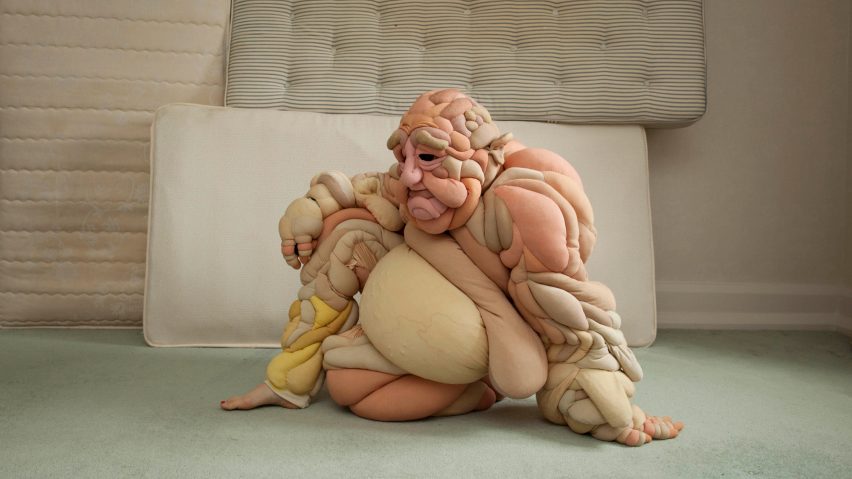
Daisy May Collingridge's "squishy" flesh suits quash the idea of an ideal body type
Textile artist Daisy May Collingridge has designed a family of fleshy, fabric bodysuits as "a joyful representation of the human form".
Dubbed The Squishies, the bodysuits feature overlapping layers of skin-like rolls that have been hand-stitched from jersey and cotton.
Fillings made of wadding, beanbag beans and sand are used to provide different weights and textures.
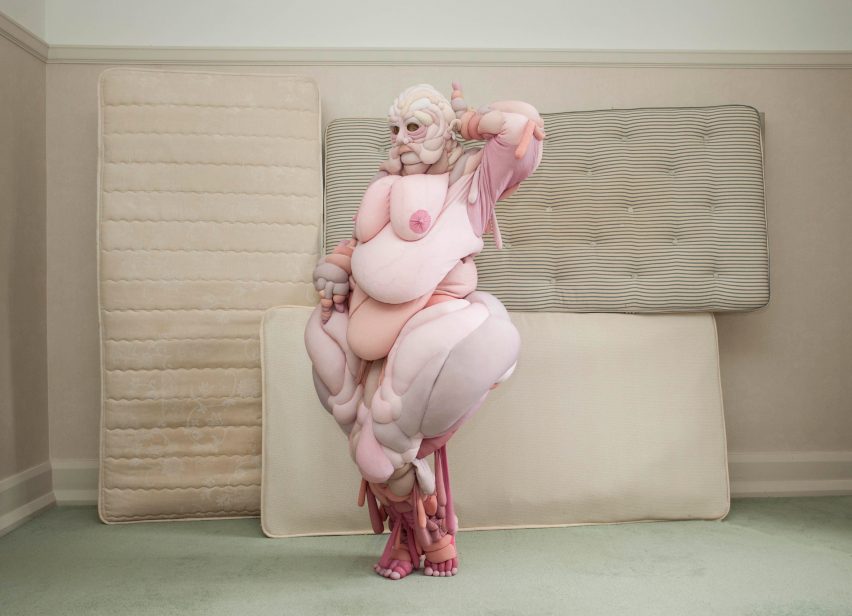
Each piece looks like a playful take on the bodies seen in muscular anatomy diagrams. Some boast shades of muted pink, purple and blue, while others feature more vibrant tones of orange and yellow paired with beige hues.
"For me the suits are a joyful representation of the human form, but with fantasy elements" Collingridge told Dezeen. "They are bodily, they celebrate flesh, form and movement."
"Instead of sculpting with stone or marble, sculpting with fabric is more tactile, more life-like," she added. "Fabric is soft, warm and will not last forever, just like people."
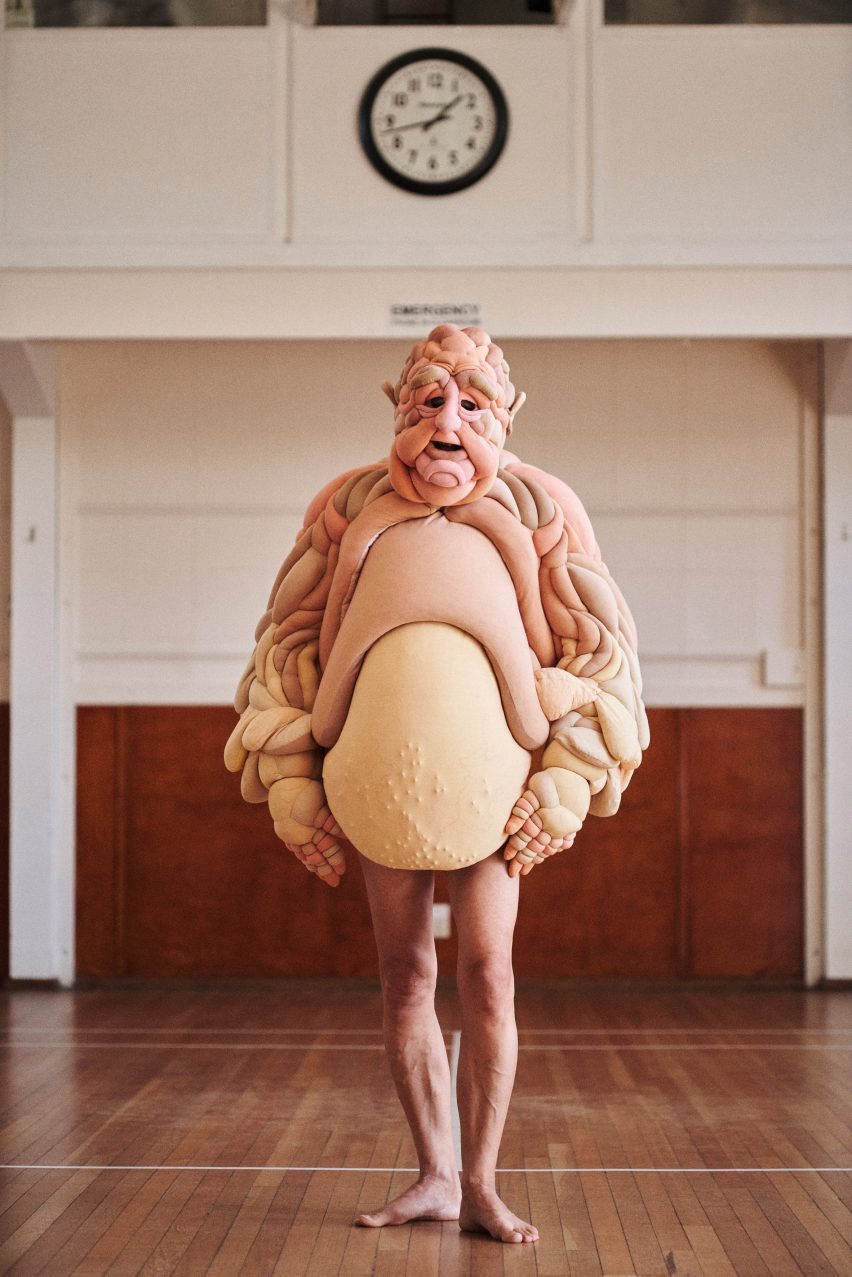
The Central Saint Martins graduate designed the suits as a celebration of the human body, in all its forms.
"They neither promote or demote one body type," she said. "The idea that there even is an 'ideal body' is ridiculous."
"They, just like people, have their own individual characters and, just like people, some people will be repelled by them whilst others will adore them."
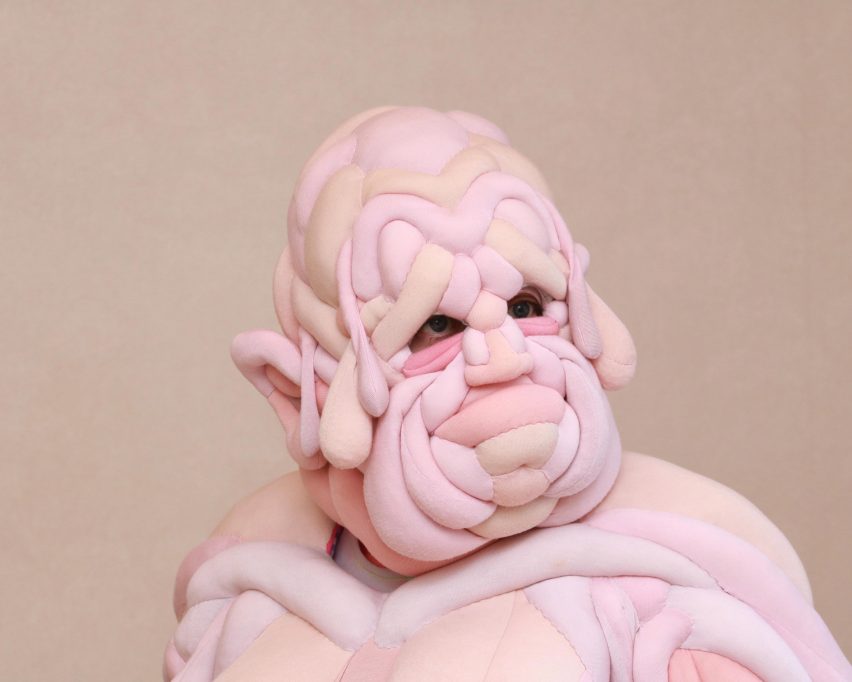
Collingridge also gives each suit its own name – the current family consists of Burt, Hilary, Clive and Dave – and imagines each one as having its own character.
The sculptures can be displayed as static items or can be worn for "a more lifelike performance". Designed to respond to movement, she envisions them being used in dance or film.
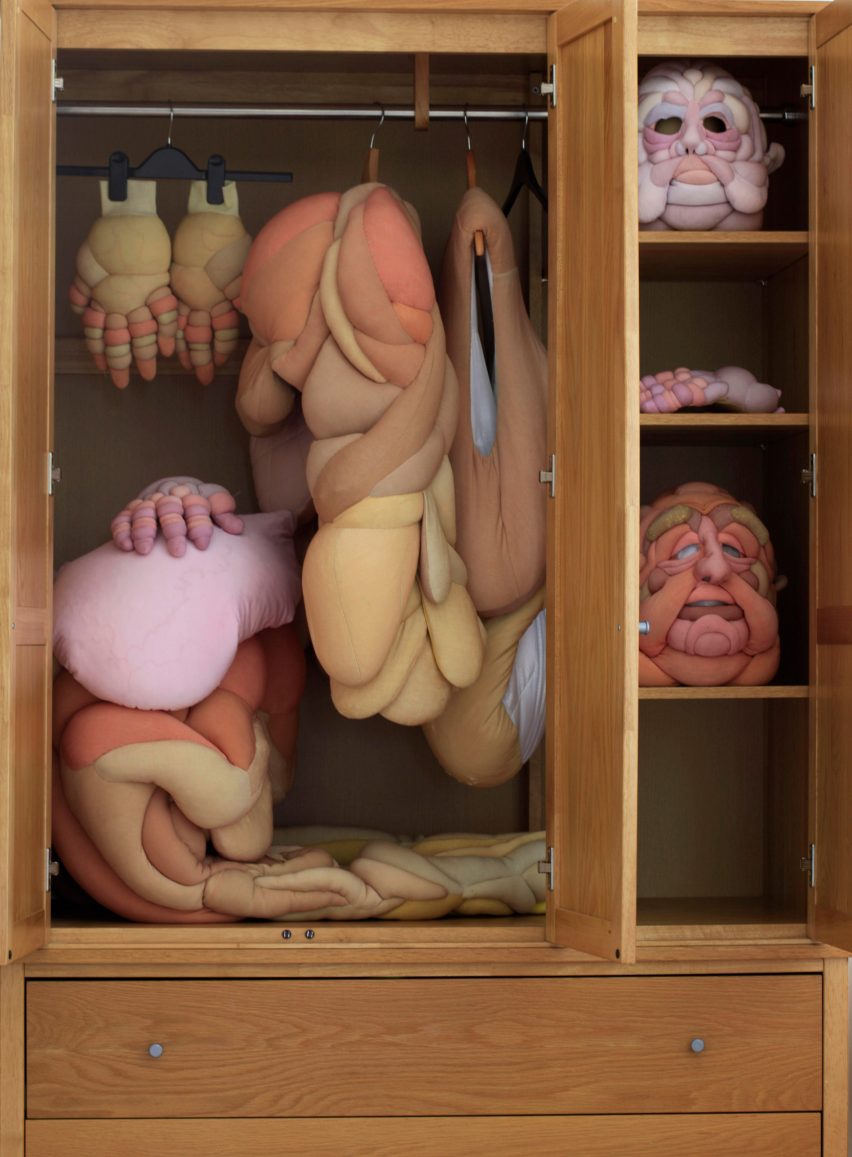
Each bespoke piece took around three months to create, and is the result of combining free machine quilting with the trapunto technique, mixed with some "crazy patchwork".
Free machine quilting sees two or more layers of fabric sandwiched together with stitching, while trapunto requires adding additional batting or stuffing from the underside to create a rounder effect.
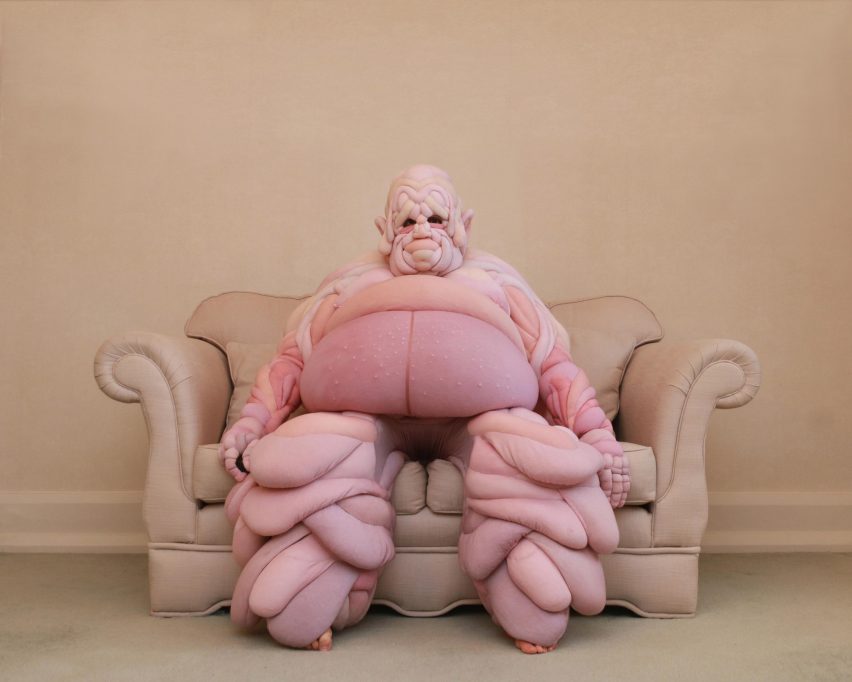
Each bodysuit is composed of numerous elements of jersey stretched over shaped wadding, and hand-stitched onto base garments such as trousers, jackets or gloves.
"In reality the technique probably cannot be defined as quilting, but the idea of layering and relief patterns are fundamental to the process," the designer explained.
"I love the patterns you make by the change in the relief of the fabric," she added. "However, there is a limit to how thick you can make a quilt – or dress – before it physically cannot get under the sewing machine."
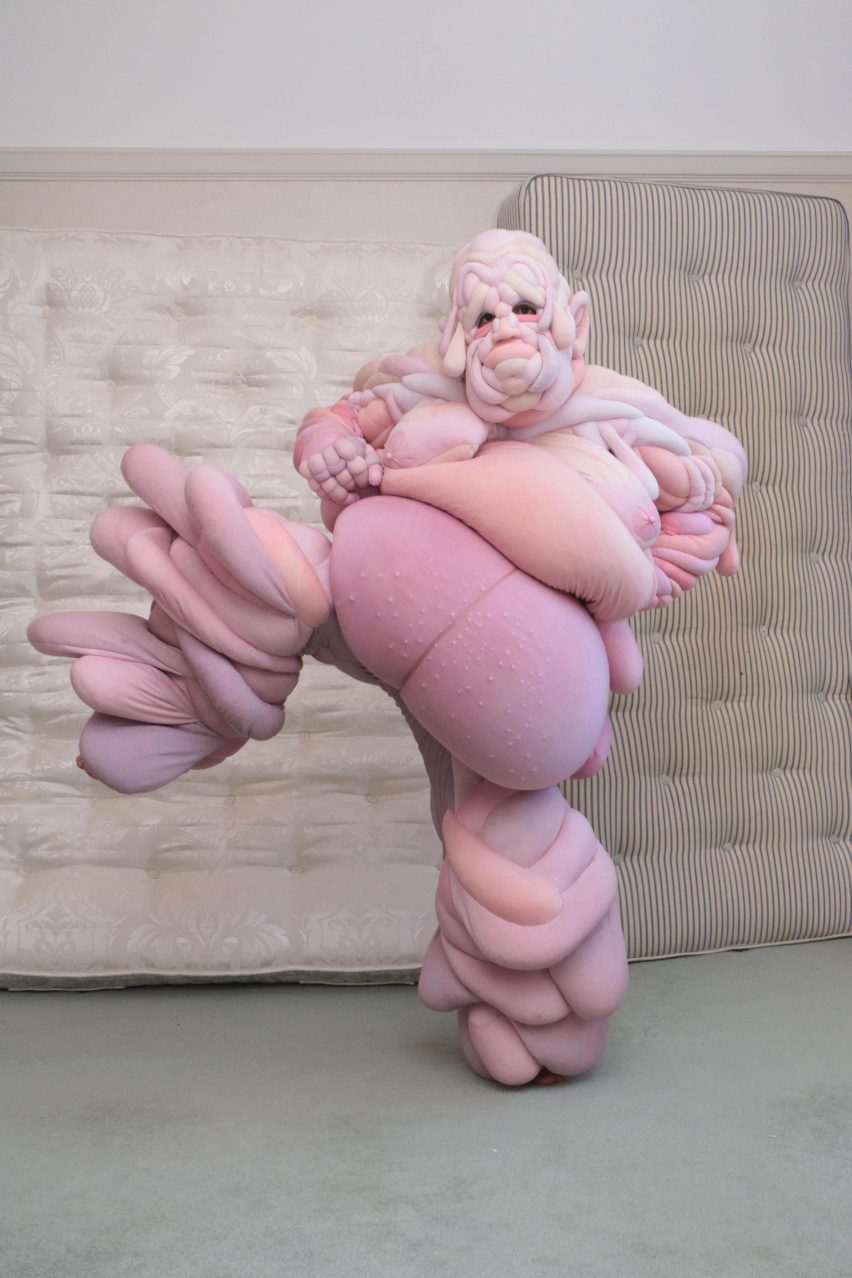
While Collingridge "subconsciously" takes design cues from high school education, where she studied artists such as Jenny Saville and Louise Bourgeois, she told Dezeen that her work is also a product of her childhood, having grown up in a family of doctors, nurses and scientists.
"The human body has always been a subject of fascination for me," she explained. "My mum took me to see Body World, by Gunther von Hagens, which showed the human – and other animals – in all their biological, anatomical glory preserved by plastination."
"Combine these scientific dinner table conversations with a mum who can turn her hand to all the crafts: she can crochet, silk paint, dye, toy-make, quilt, embroider and I am pretty sure she has done upholstery too," she said.
"This combination of practicality and creativity seems to have irresistibly steered my work to what is."
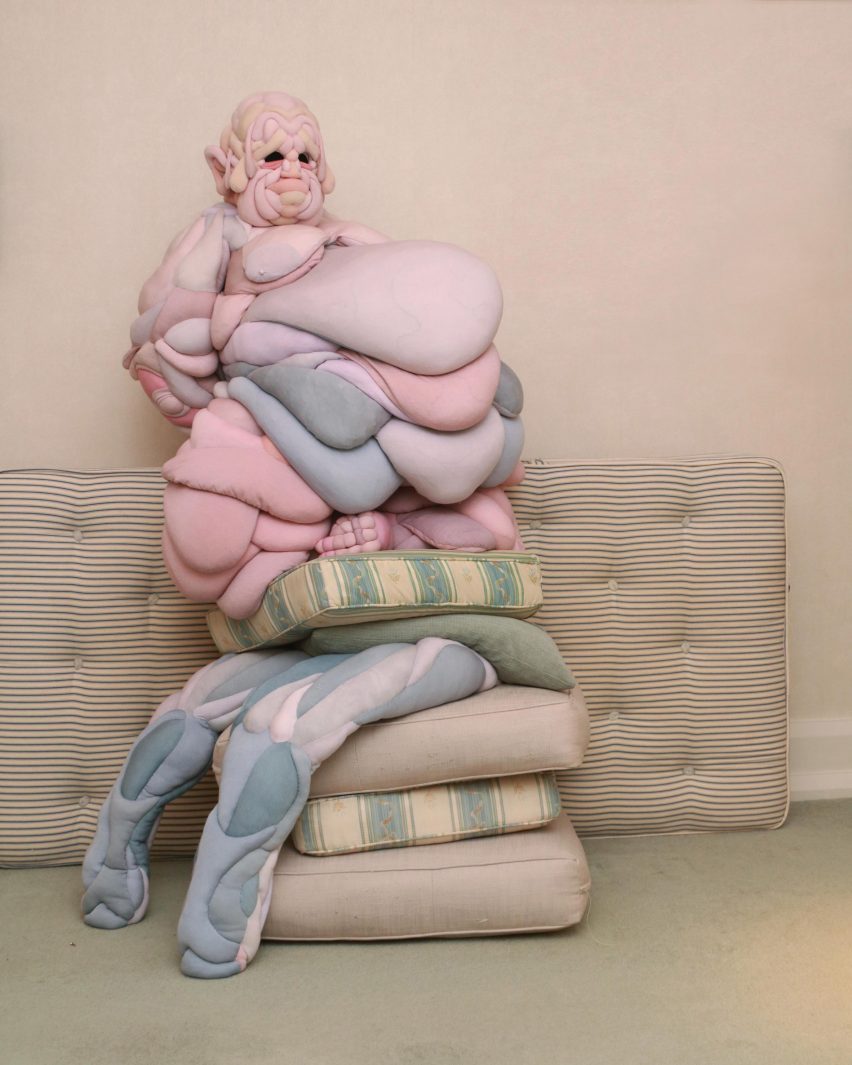
Royal College of Art graduate, Karoline Vitto, also wanted to promote a positive body image with her The Body as Material collection, which features seven cloth and metal-wire garments that accentuate the rolls and curves of the female form.
Vitto wanted the garments to encourage women to look at areas that they consider to be flaws more kindly.
Photography is by Daisy May Collingridge, unless otherwise stated.